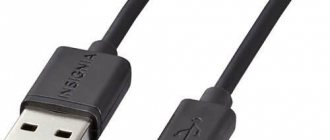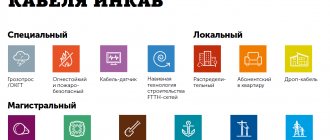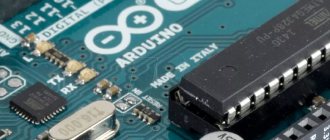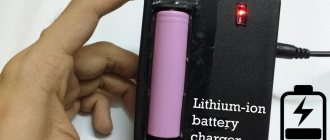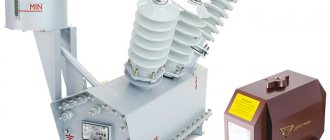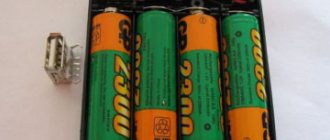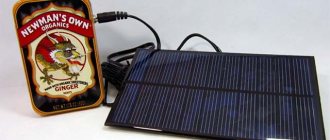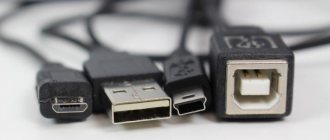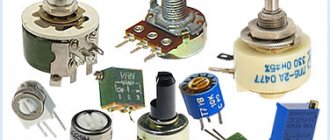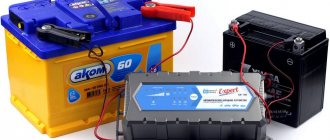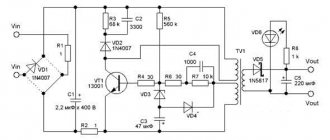In what situations can you safely charge a gadget using a non-original charger, and when is it better not to risk it?
Nowadays, almost every home has several chargers: for a smartphone, tablet, player and other gadgets. In this regard, many users have a question: is it possible to use a non-native charger? What happens if you use a tablet charger for a smartphone? Why are Chinese analogues dangerous?
Our review article will try to answer all questions and dispel popular myths.
MicroUSB
The most famous and popular of these solutions is the MicroUSB connector, which allows not only charging the device, but also transferring data. With its spread, there is no longer a need to have its own charger for each gadget, and the MicroUSB/USB Type-A cable has become a universal way to connect a smartphone to both a charger and a computer or laptop.
Important: the phone charges much slower from a PC than from a charger connected directly to an outlet. If you want to charge your device as quickly as possible, put it in airplane mode and use the charger.
The dimensions of the connector are only 7x2 mm. It was compactness that became one of the main factors that played in its favor when manufacturers were choosing between MicroUSB and MiniUSB options. The standard provides power up to 2.5 W and allows you to fully charge the phone in 1-5 hours, depending on the battery capacity, as well as the characteristics of the charger and the device itself. The maximum data transfer rate through such a connector in theory can be up to 480 Mbit/s, but in practice it is limited by many factors and can be several times lower.
In 2009, 13 companies producing smartphones and other digital equipment, including such large ones as Samsung and Apple, signed a document confirming their intention to standardize connectors and interfaces. The reasons are not only marketing, but also political, as well as reputational - European authorities have repeatedly called on manufacturers not to increase the number of different chargers, which then need to be recycled or disposed of.
About a year later, the European Parliament published a statement officially calling on mobile device manufacturers to switch to a single standard. This policy of representatives of various states played a role in securing microUSB as a universal connector for charging gadgets and transferring files. Only a few companies abandoned it. The most famous among them is Apple.
OTG standard
Many models of smartphones and tablets can be connected to the same models of flash drives as a PC - you only need the device to support the OTG standard and a special adapter.
Using it, you can connect to your phone not only a compact flash drive, but also a computer mouse, keyboard or gamepad. The adapter is also suitable for connecting a printer - documents and pictures can be printed directly from a mobile gadget.
Lightning
Previously, the Cupertino company's mobile gadgets used Apple's proprietary 30pin standard, but since 2012 it was replaced by the eight-pin Apple Lightning connector, which is similar in charging and data transfer speeds to MicroUSB. Calls from officials and the media did not lead to the abandonment of its own connector; instead, the company released a number of adapters with which you can charge your iPhone using regular USB chargers.
What types of connectors are there for charging phones?
The first connector in phones was intended specifically for charging the gadget. Each manufacturer has its own standards, so in the past, often the charger from one cell phone did not fit the size of another. At the beginning of 2000, companies took into account the inconvenience and impracticality of connectors and began to use unified options.
USB Type-C
The standard designed to replace the aging microUSB is USB Type-C. The maximum theoretical data transfer rate through this connector is up to 10 Gbit/s, which is provided by a contact group with 24 pins. However, it all depends on the implementation in a specific device model - if the manufacturer did not provide support for USB 3.0 or 3.1, limiting itself to USB 2.0, then there will be no increase in speed compared to MicroUSB. By the way, the dimensions of the connector are 8.34×2.56 mm. A little more than MicroUSB, but this is a small price to pay for the multiple performance gains: USB Type-C remains very compact and can be used in almost any device.
An additional advantage of the updated interface is the symmetry of the oval connector. Now users will not have to turn the plug over several times, swearing at engineers who are not familiar with the concept of “usability”. The charging speed has also increased noticeably, and the maximum theoretical power supported by the interface (with USB 3.1) reaches 100 W, but this option requires advanced implementation - standard profiles are limited to 7.5-15 watts. The declared mechanical resource is no different from MicroUSB and is about 10,000 connections.
USB Type-C and USB 3.1 - what is the difference
It is necessary to distinguish the connector form factor from the data exchange standard. For example, the USB Type-C format can comply with different specifications - USB 2.0, 3.0 or 3.1. In the first case, it is capable of transmitting data at speeds of up to 480 Mbit/s, and in the latter – up to 10 Gbit/s. MicroUSB connectors on smartphones comply with the USB 2.0 standard.
The actual information transfer speed is usually several times less than the maximum and can be limited not only by the supported standard, but also by the cable, the port of a smartphone, tablet or computer, the performance of the controller and memory, so the theoretical limit is unattainable in real use scenarios.
Based on the above, the presence of a USB Type-C connector on a device does not guarantee high charging and data transfer speeds. The current version of the interface should be clarified in the technical specifications of specific devices, and then compared with user experience - thematic forums and other specialized resources will help with this.
If the tracks are broken
Often the conductive paths or contact pads under the connector are broken. This can happen both during operation of the part and during dismantling. In the first case, the tracks come off in attempts to “find contact” by pulling the plug in the socket. In the second - in case of underheating (the pads break off along with the connector) or overheating (the foil simply flies off the textolite substrate).
How to be in this case? Most often, the problem can be solved using a soldering iron with a thin tip and a single-core wire with a diameter of 0.2 mm (see the “Consumables” section). We strip the installation wire and extract one core from it. We service it carefully. We install the new connector with a hairdryer or soldering iron. Then solder one end of the wire to the socket contact, and the other to the place closest to the break. Here we are lucky - there are spots nearby that are easy to solder to. If they are not there, then you will have to clean the torn tracks from the varnish, tin them and solder to them. A little more complicated, but also possible.
We wash the “Galoshes” and study our work. If everything is visually beautiful, then we strengthen the nest with compound. Apply it from a syringe and heat it with a hairdryer for a minute at 180 degrees. The compound will strengthen the entire structure, since several contacts practically do not hold onto anything, which means the connector will have play.
Expert opinion
Alexey Bartosh
Specialist in repair and maintenance of electrical equipment and industrial electronics.
Ask a Question
Healthy! If you need to dismantle the connector, the compound can be easily removed by heating it with the same hairdryer at a temperature of 300 degrees Celsius.
USB Type-C and USB 3.1 - what is the difference
It is necessary to distinguish the connector form factor from the data exchange standard. For example, the USB Type-C format can comply with different specifications - USB 2.0, 3.0 or 3.1. In the first case, it is capable of transmitting data at speeds of up to 480 Mbit/s, and in the latter – up to 10 Gbit/s. MicroUSB connectors on smartphones comply with the USB 2.0 standard.
The actual information transfer speed is usually several times less than the maximum and can be limited not only by the supported standard, but also by the cable, the port of a smartphone, tablet or computer, the performance of the controller and memory, so the theoretical limit is unattainable in real use scenarios.
Based on the above, the presence of a USB Type-C connector on a device does not guarantee high charging and data transfer speeds. The current version of the interface should be clarified in the technical specifications of specific devices, and then compared with user experience - thematic forums and other specialized resources will help with this.
USB power supply
The power for which connected devices with USB connectors are designed is 2.5 W, as well as 4.5 W (for the third version).
Based on this, USB connectors of all versions require a voltage of 5 V. Current is up to 0.5 A, and for the third version - 0.9 A.
USB 3.0 pins.
Devices such as players, memory cards, phones, flash drives (that is, devices with low power) can be freely connected using such connectors.
And technical means with high power are connected to an external electrical network.
USB Type-C: what are the advantages?
The transition from micro-USB to USB Type-C is a new trend in the mobile electronics market! Manufacturers are actively mastering the technology and equipping their flagship models with improved connectors for charging and data transfer. USB Type-C has been waiting “in the shadows” for a long time: the connector was created back in 2013, but only in 2016 did market leaders pay attention to it.
USB Type-C looks like this:
What are the advantages of Type-C over the usual micro-USB ?
- High data transfer speed. Type-C throughput is 10 Gb/sec (!). But this is only throughput USB 3.1 - for example, Nexus 6P and 5X - can count on this speed . If the gadget uses the USB 3.0 , the speed will be around 5 Gb/sec; With USB 2.0, data transfer will be significantly slower.
- Fast charging. The duration of the smartphone charging procedure depends on the potential amount of watts supplied by the connector. USB 2.0 standard can supply only 2.5 W - that’s why charging takes hours. The USB Type-C connector provides 100 W – that is, 40 times (!) more. It is curious that current transmission can occur in both directions - both to the host and from it.
- Connector symmetry. micro-USB connector has a top and bottom, the Type-C is symmetrical. Which side you insert it into the connector does not matter. From this point of view, USB Type-C is similar to Lightning .
The advantage of Type-C is also the small size of the connector - only 8.4x2.6 millimeters. By this criterion, micro-USB and USB Type-C are similar.
USB Type-C has disadvantages, one of which is more than significant. Due to the unregulated operation of the connector, charging can easily “fry” the mobile device. This probability is not purely theoretical - fires have occurred in practice. It is for this reason that the distribution of non-original, “makeshift” USB Type-C is prohibited.
The USB Type-C connector is already installed on the following mobile devices: Microsoft Lumia 950XL , G5 SE , HTC 10 Lifestyle , Huawei Honor 8, Asus Zenfone 3 .
Choosing a charger for a smartphone
To choose the right charger, you need to know the technical characteristics that determine the consumer properties of the charger. It is equally important to understand what and in what direction is affected by the discrepancy between the adapter parameters and those specified in the technical specifications for the mobile gadget.
Types of chargers
In most cases, mobile gadgets are equipped with a standard network adapter, and other types must be purchased separately.
Types of charging connectors
At the beginning of the era of mobile gadgets, device manufacturers made connectors for each individual device. This brought them some additional profit, since the owner was forced to purchase only original chargers - others did not match the shape of the plug or voltage, and it was difficult to choose a suitable option. Users had to endure the inconvenience. Now the situation has changed, leading participants in the mobile gadgets market are striving for standardization. Most devices use three types of terminals for charging and data transfer.
Lightning
This connector is used in Apple mobile devices. It replaced the bulky 30-pin terminal and is the standard for gadgets produced by this company, although there is information about the company’s plans to switch to USB Type C. The connector is double-sided - you can connect on one side or the other. This was the first time such a solution was used when developing a connector, and at that time it was a breakthrough.
The advantages of such a connector are its robust design, as well as the ability to be cleaned of dirt when connected.
If you analyze the location and purpose of the pins in the connector, it becomes obvious that the functionality of the pins is asymmetrical. The connection direction is determined at the moment of connection by the built-in chip. The same microcircuit serves as protection against counterfeiting.
MicroUSB
This connector replaced the MiniUSB connector. Its visible difference from the previous modification is its size. In fact, microUSB has other advantages:
The disadvantages include the need for positioning when connecting (the connector is not reversible like Type C or Lightning). This led to a reduction in the use of this terminal.
Charging cords use a type B plug, since the phone in most cases acts as a peripheral device.
| № | Designation | Function | Wire insulation color |
| 1 | Vbus | Supply voltage (+5 volts) | Red |
| 2 | D- | DATA- | White |
| 3 | D+ | DATA+ | Green |
| 4 | ID | ON-the-GO ID | |
| 5 | GND | Common wire (0V) | Black |
Wire 4 defines the purpose of the connector in On-the-Go mode (when additional devices are connected to the phone directly) - a connection to the common wire means that the end is connected to the host, and if the pin is not connected to anything, the connector is connected to the peripheral device.
USB Type C
The most common and at the same time the most promising connector for mobile equipment is USB Type C. It is designed for use with gadgets with the Android operating system, but it is also used by manufacturers of other mobile equipment.
The oval plug contains two rows of contacts - one row is numbered from A1 to A12, the other - from B1 to B12. The contacts are located symmetrically, so the plug can be inserted on either side and no microcircuits are required to determine the position. Contacts can be grouped by functionality.
| Pin number | Marking | Purpose |
| 1.12 (A1, A12, B1, B12) | GND | 0 volt |
| 4,9 | Vbus | + supply voltage |
| 2,3,10,11 | TX+, TX-, RX+,RX- | USB3.0 bus |
| 6,7 | D+, D- | USB 2.0 bus |
| 5 | CC | Pin configuration |
| 8 | SBU | Additional channel |
The power bus is parallelized into two pins. This allows additional power to be transmitted, which can reach 100 watts for some cables. This implies a current of up to 20 amperes at a supply voltage of 5 volts. A regular cord is rated for 1.5 or 3 amperes.
The receiver (RX) and transmitter (TX) pins of the USB 3.0 bus in the cable are crossed (recrossed), so what is the receiver input on one side is connected to the transmitter output on the other side and vice versa. The configuration pin defines:
The SBU pin is used very rarely.
The USB Type C connector has much greater capabilities compared to Lightning and better development prospects. Therefore, information about the possible transition of Apple technology to this type of connector has a basis.
For clarity, we will support the video.
Current parameters
When choosing the type of charger, first of all you need to pay attention to one of the most important parameters - the highest current that the adapter can produce. The lower the current, the longer the battery will charge , and if the charger is designed for a very low current (0.5 A or less), then it can be turned off by overload protection. This charger is suitable for charging wireless headphones and other low-power devices.
For middle-class smartphones, a charger with a current of 1.0..1.5 A (1000..1500 mA) is quite suitable. For more serious phones and other equipment with capacious batteries, you need to choose adapters with a current of 1.5..3 A. If the device supports the fast charging function, then a current of at least 5 A will be required. The easiest way to determine the required current is to look at the parameters on the body of the native charger and purchase a charger with equal or greater power.
Availability of fast charging
Some smartphones support fast charging. It is produced by a large current, so you need to choose a charger with the appropriate parameters (from 5 A). Manufacturers claim that this mode does not damage the battery, but this statement is quite disingenuous. A charging current that is increased within reasonable limits cannot clearly damage the battery, but at the same time the battery life is significantly (several times) reduced. The choice is up to the user. In addition, not every gadget supports this mode. Therefore, before you pay for additional power, you need to find out whether such a function will be needed at all.
Connector types
The second and third versions of connectors are distinguished by size: Mini USB (small sizes), Micro USB (even smaller sizes); and also by types: A, B.
USB 2.0 type A connector.
A reliable connector whose main characteristic is the ability to withstand more than one connection without losing its integrity.
The cross-section of the connector has a rectangular shape, which creates additional protection when connecting.
Its disadvantage is its large size, and all modern devices are portable, which influenced the development and production of connectors of a similar type, but of a smaller size.
USB 2.0 Type A was introduced in the nineties and is currently still the most used.
A significant number of low-power devices have it: keyboard, mouse, flash drive and others.
USB connector version 2.0 type B.
We mainly find its application in stationary devices of large dimensions. These include scanners, printers, and less commonly ADSL modems.
It is rare, but it still happens that cables of this type are sold separately from the equipment itself, because they are not part of the technical device kit. Therefore, check the complete set of devices.
Connectors of this type are not as popular as type A connectors.
The square and trapezoidal shape is inherent in all type B connectors.
These include both Mini and Micro.
The peculiarity of the cross-section of type “B” connectors is their square shape, which distinguishes it from other types.
Mini USB connectors of the second version, type B.
The name of this type of connector indicates that it has very small dimensions. And this is not surprising, because the modern market increasingly offers miniature goods.
Thanks to the use of personal hard drives, card readers, players and other small devices, USB Mini connectors related to type B have become very popular.
It should be noted that such connectors are unreliable. It becomes loose with frequent use.
But the use of USB Mini Type A connector models is extremely limited.
Micro USB 2.0 type B connectors.
Micro USB connector models are more advanced than Mini USB models.
This type of connector is incredibly small in size.
Unlike the previous mini types presented, these connectors are very reliable with their fastenings and connection fixation.
The Micro USB 2.0 connector type “B” has been recognized in its qualities as uniform for universal use for charging all portable devices.
What will happen over time, when all manufacturers begin to produce equipment adapted specifically to such connectors. It probably won't take long to see it.
But this decision was already made in 2011 by all modern manufacturers, although the Micro USB 2.0 type “B” connector is not yet present on all devices.
USB third version type A connectors.
USB 3.0 connectors have greater speed for information transfer due to additional contacts.
With such changes, feedback compatibility is still maintained. Its use has been established in computers and laptops of the latest generation.
USB connectors third version type B.
The third version of USB type “B” connectors are not suitable for connecting USB connectors of the second version.
It is used in the operation of peripheral devices with medium and large productivity.
Micro USB 3.0.
Modern high-speed external drives, as well as SSD-type drives, are basically all equipped with a connector that is characterized by a high speed of information exchange.
It is increasingly occupying a leading position due to the fact that it has very high-quality connections.
About the sore point: proprietary connectors
The reason for writing this post was the power supply for the Nintendo Wii , which died in peace at the most unexpected moment. Flashing brightly, knocking out the plugs in the shield and ordering a long life, it forced us to spend a lot of time looking for a replacement.
As it turned out, it is not easy to find such an adapter even in a large city: the only online store that came across promised delivery in 1-2 weeks, which cannot be called a quick solution to the problem. If we compare this adapter with analogues that have similar characteristics, then it costs almost 2.5 times more, precisely due to the rare connector and the lack of adapters. Maybe they are AliExpress
I also remember another story that arose with the PlayStation Vita : do you remember what memory cards it had? Yes, yes, special ones, designed exclusively for this console, costing much more than regular microSD . What do you think of Apple’s of abandoning 3.5 mm and using its own Lightning even in 2017? It’s quite clear why they do this: buy only ours and no one else’s, slaves. Well, make affordable prices and organize normal supplies without shortages, damn you!
The situation with Nintendo is further aggravated by the abundance of accessories for the same Wii , which you do not need at all, but you will definitely come across some game that will require them. the first PSP for its standard power connector, a regular mini-USB Memory Stick Pro DUO Flash cards , which are hard to find on sale.
What about the buyers? The consumer, as you know, votes exclusively with rubles, and with the huge demand for devices, the manufacturer is free to dictate any fashion to him, even the most perverted one. With multimillion-dollar profits from the same Nintendo Wii, the Japanese are not very worried about ensuring decent supplies to all sorts of insignificant countries in Eastern Europe.
The main differences between Micro and Mini USB connectors
At first glance, these connectors are very similar. Indeed, most of the characteristic features of the basic parameters of these species coincide.
But upon closer inspection, you can notice the following differences:
- The USB Mini connector is larger than the USB Micro connector.
- The presence of special-purpose latches on the back side of the USB Micro connectors.
Many users have already become convinced that it is most convenient to have not just one type of connector, but several, because different types of devices have different types of USB connectors.
Unfortunately, device manufacturers have not yet come to a single standard, and most likely will not come for a long time, because each type of USB connector has its own purpose.
USB type A
Found on computer host controllers and hubs, the Type A connector is a flat, rectangular interface. This interface holds the connection in place using friction, making it very easy for users to connect and disconnect. Instead of round pins, the connector uses flat pins that can withstand constant connection and disconnection very well. The Type A connector provides a downstream connection that is intended for use exclusively on host controllers and hubs. It is not intended to transfer information from the device to the computer. This is critical because the host controller or hub is designed to provide a constant 5V current on one of the USB pins. Sometimes AA cables are used to connect Type A USB devices to a computer or other USB device, and to transfer data between two computers.
Note. Typically, an AA cable is not used to connect two computers or to connect a USB hub between two computers. This can cause irreparable damage to your computer and even cause a fire. Please consult the manufacturer before using an AA data cable.
Male:
Female:
USB type B
The Type B connector is for use with USB peripheral devices. The Type B interface has a square shape with slightly chamfered corners. Like the Type A connector, it uses friction from the connector body to lock into place. Socket B is an upstream connector that is used for peripheral devices only. For this reason, most USB devices require an AB cable.
Male:
Female:
USB type C
The USB-C or USB Type C connector is the newest USB connector on the market. The USB-C connector has a reversible/balanced design and can be connected to any USB-C device. The USB-C cable can carry USB 3.1, USB 3.0, USB 2.0 and USB 1.1 signals. USB-C is typically combined with USB-A, USB-B, USB Micro-B, and other USB connectors while supporting previous versions of the USB specification. USB-C can be adapted to work with each of these legacy connectors. When connecting two USB 3.1 devices, the USB-C cable will support data transfer speeds twice that of existing USB technology (up to 10 Gbps), improved power output up to 20 volts, 5 amps and 100 watts for power and charging, and built-in support for DisplayPort video and four-channel audio (speaker and microphone).
Male:
Micro-USB B
This connector, recognized as USB-IF, can also be found on newer mobile devices such as mobile phones, GPS devices, PDAs and digital cameras. Micro-USB B is a physically smaller connector compared to USB Mini-b, but still supports high data transfer speeds of 480 Mbps and On-The-Go functionality. The connector can be easily identified by its black socket and compact 5-pin design.
Male:
USB Mini-b (5-pin)
One of the disadvantages of Connector B is its size - almost half an inch on each side. This has made Interface B unsuitable for many compact personal electronic devices such as PDAs, digital cameras and mobile phones. As a result, many device manufacturers have begun miniaturizing USB connectors, starting with the Mini-b. This 5-pin Mini-b is the most popular Mini-b connector type and the only one recognized by USB-IF. By default, the Mini-b cable is assumed to have 5 pins. This connector is quite small, measuring about 2/3 the width of Connector A. It is also designed for use with the newer USB On-The-Go standard, which allows peripheral devices to communicate in the presence of a host controller.
Male:
USB Mini-b (4-pin)
Instead of the regular 5-pin Mini-b, this unofficial connector is used in many digital cameras, especially some Kodak® models. It resembles the shape of a standard Type B connector with beveled corners, but is much smaller in size.
Male:
What is the OTG standard?
Surely many have seen such a cable and wondered what it is for:
OTG cable ; at one end there is a micro-USB , at the other there is a USB 2.0 , “female”. Using such a cable, you can connect a USB flash drive to a smartphone or tablet, but only if the mobile device itself supports the OTG .
OTG (short for On-The-Go ) is a function designed to quickly connect 2 USB devices to each other, without the mediation of a computer. connect not only a flash drive OTG You can even connect your smartphone to a printer or MFP to print out a photo taken with the gadget’s camera.
OTG cables for the iPhone have also already appeared, but only photos and videos can be loaded onto an Apple device (without jailbreak) from an external storage device – and then only when the root folders on the flash drive and the photos themselves have the “correct” names.
complete list of smartphones that support the OTG - simply because almost all modern gadgets can boast of having this standard and the list would be huge. However, a buyer who intends to connect a mouse or flash drive to a device should inquire from a store consultant about OTG before handing over money - “just in case.”
USB 3.0 0 type A
Known as "SuperSpeed", this Type A connector is commonly found on computer and hub host controllers and is a flat, rectangular interface. This interface holds the connection in place using friction, making it very easy for users to connect and disconnect. Instead of round pins, the connector uses flat pins that can withstand constant connection and disconnection very well. Connector A provides a downstream connection that is intended for use exclusively on host controllers and hubs. This connector is similar in size and shape to the Type A connector used in USB 2.0 and USB 1.1 devices. However, USB 3.0 Type A has additional pins that are not found in USB 2.0 and USB 1.1 Type A. The USB 3.0 connector is designed for USB SuperSpeed devices, however, it will transfer data from slower connectors and is backward compatible with USB 2.0 ports. USB 3.0 A connectors can be distinguished from previous versions by their blue color.
Male:
USB 3.0 type B
The USB 3.0 B-type connector is found on USB 3.0 devices. This connector is designed to transfer data and power USB SuperSpeed devices. Cables with this connector are not backward compatible with USB 2.0 or USB 1.1 devices; however, USB 3.0 devices with this connection type can connect to legacy USB 2.0 and 1.1 cables.
Male:
USB 3.0 Micro B
The USB 3.0 Micro B connector is found in USB 3.0 devices. This connector is designed to transfer data and power USB SuperSpeed devices. Cables using this connector are not backward compatible with USB 2.0 or USB 1.1 devices.
Male:
Female:
Interface compatibility
USB connectors of the same type are distinguished by the version produced. The 3.0 standard interface offers data transfer rates of up to 1 Gbit/s. The cost of the 3rd standard is an order of magnitude higher than the second, but users choose it because the 3.0 standard has increased transmission speed.
The interfaces are compatible, but work with degradation in quality and efficiency. For example, if you insert a 2.0 cable into a 3.0 port, the transmitter will operate at 2.0 speed. This is also observed in the opposite direction.
Therefore, to properly use USB standard 3.0, you need a connector in the computer with the same speed. Otherwise, the money will be given in vain. The speed of information exchange will not change.
USB is a universal serial bus that allows the device to communicate with a computer. USB types depend on the functionality performed by the cable. You need to be careful when choosing a cable; the speed of the device depends on it.
Source
Micro-USB AB
Designed exclusively for USB On-The-Go devices, this universal connector can connect to a Micro-USB A or Micro-USB B cable. This interface is easily identified by its gray socket and compact 5-pin design. This type of connector only exists as a socket for On-The-Go devices, but there are no cables with this connector.
Micro-USB A
This connector, recognized as USB-IF, can be found on newer mobile devices such as cell phones, GPS devices, PDAs, and digital cameras. Micro-USB A is a physically smaller connector compared to USB Mini-b, but still supports high data transfer speeds of 480 Mbps and On-The-Go function. The connection is easily identified by the white socket and compact 5-pin design.
Male:
Quality of Chinese chargers and cables
Cheap chargers and cables from unknown manufacturers in Southeast Asia may be of poor quality. First of all, this applies to the use of alloys of unknown composition in conductors instead of copper. This may result in overheating or limited charging current. The same effect is caused by an undersized wire cross-section and poor-quality soldering (or even crimp connection) of the connectors. Simplified circuit design can lead to non-optimal charging modes, which reduces battery life. And the simplest, but most unpleasant thing is that the lifespan of such devices is, as a rule, short, and such an adapter can fail at any time.
You need to consciously choose a charger for your mobile gadget. Otherwise, not only disappointments, but also technical problems cannot be avoided. And in the worst case, even financial losses.
Source
USB Mini-b (Fuji®)
This is another unofficial connector that is also widely used on digital cameras, especially some Fuji® models. Due to its flat, rectangular shape, it more closely resembles an A-type connector.
Conclusion
Almost all modern smartphones and tablets are equipped with a microUSB connector (all of them comply with USB 2.0 specifications) or USB Type-C with support for USB 2.0, 3.0 or 3.1. Some of them have a fast charging function that requires a compatible charger - the implementation options in models from different manufacturers in this case differ.
MicroUSB is slowly moving into the category of a connector for low-cost devices, and USB Type-C is now found not only in flagship smartphones, but also in mid-price gadgets, and sometimes in budget phones. At the same time, buyers should not let their guard down - before purchasing a new device, they should familiarize themselves with its characteristics and clarify which version of USB a particular model supports, if it is equipped with a USB Type-C connector.
An exception that does not use microUSB or USB Type-C is the iPhone - Apple smartphones have a proprietary Lightning connector instead, and to charge them using the USB interface you need an adapter cable.
What types of connectors are there for charging phones?
There are several types of universal connectors designed for charging a mobile phone.
Micro USB
Today this connector is used in almost all Android phones, except Type-C. The wire not only charges the gadget, but also transfers data to a computer or laptop. The cord is gradually fading into the background, but remains in demand due to the following advantages:
Providing an OTG phone allows them to act as hosts. If you need to transfer data directly from your smartphone to your computer, then this option will allow you to do this without intermediaries. You can also connect any device to the gadget – storage device, mouse, keyboard, headphones.
Micro USB comes in different types. Version 2.0 of the type is used in gadgets by default. This is the standard for the latest modifications of tablets and phones. The second 3.0 connector is installed only on smartphones and cell phones of some brands.
Lightning
This type of connector is used by Apple, which is the company that created it. The charging type is expensive. The Chinese sell fakes for half the price, but they can quickly fail, since even original cords often break due to their fragility. Benefits of charging:
Type-C
The variety was created in 2014. The cord's connector is oval-shaped and symmetrical, so it can be inserted on either side. The new charger was required to facilitate the operation of the USB 2.0 standard - it has only 4 contacts, while version 3.1 has 24. Thanks to its high power, the connector is universal and has the following advantages:
Previously, phones could be used as PCs by connecting different devices to them. With Type-C, the potential of this function is increased due to its high power. But not all connectors are equipped with version 3.1.
Some companies equip smartphones with Type-C connectors, but install USB 3.0 inside. It has weaker technical characteristics. They may even introduce version 2.0. Therefore, before purchasing a device, you should make sure that it is 3.1.
Type-C charging is installed on the following models:
The Type-C connector has grown in popularity in recent years. Despite this, the usual USB will still not leave the market. It is estimated that about 20 billion devices in the world are equipped with USB Type A charging.
Source
